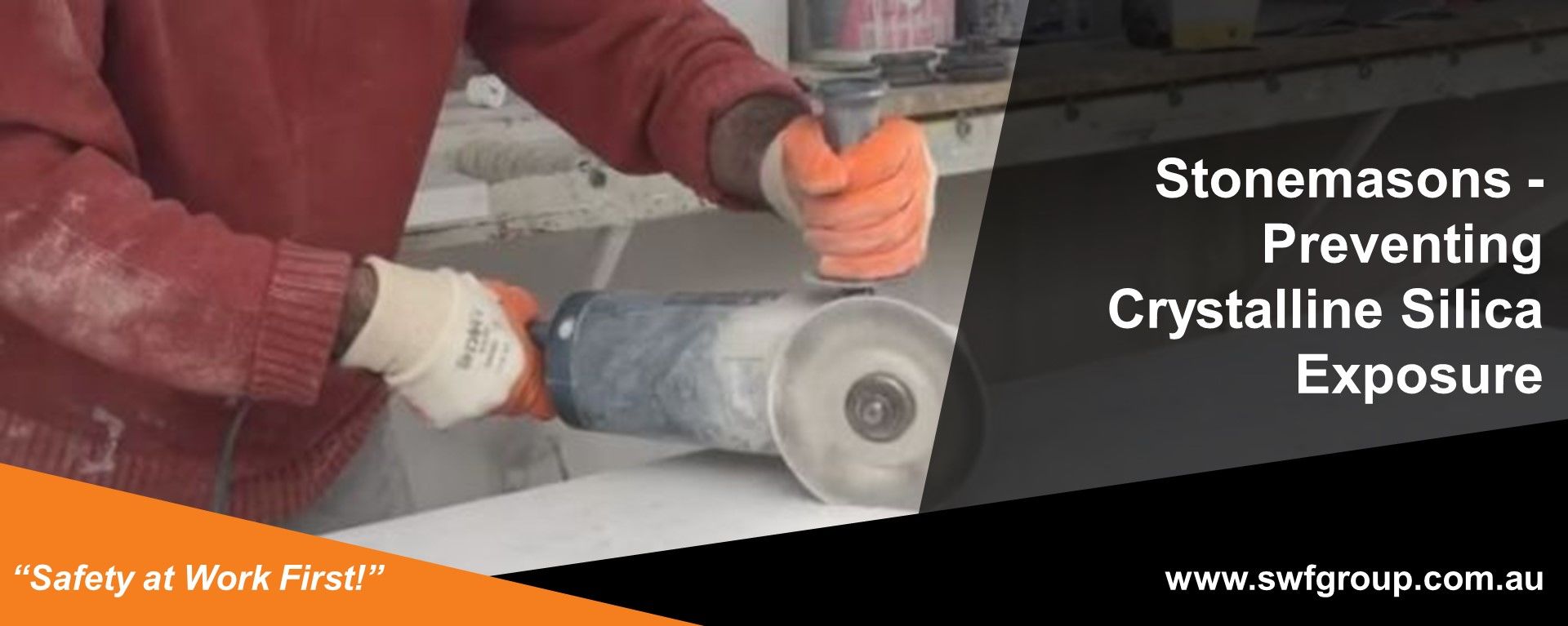
Stonemasons - Preventing Crystalline Silica Exposure
Did you know, stonemasons may be exposed to crystalline silica dust particularly when using power tools to cut, grind, or polish stone products!
The table below lists the common stone products and their typical crystalline silica content:
| Reconstituted stone (eg, Caesarstone, Quantum Quartz, Smartstone) | More than 90% |
| Sandstone | 70% to 90% |
| Granite | 25% to 40% |
| Slate | 20% to 40% |
| Marble | Less than 5% |
What are the risks?
Silica exists in two forms – crystalline silica (ie quartz) and amorphous silica. Inhalation of very fine crystalline silica over a period of time can cause silicosis (scarring of the lungs) and lung cancer. Both of these diseases can be fatal. Amorphous silica has a much lower toxicity and is essentially a nuisance dust.
What is a solution to the problem?
The risk to health associated with exposure to crystalline silica can be eliminated or reduced by:
- using wet methods (including tools with water suppression)
- where wet methods aren’t practicable, using local exhaust ventilation (LEV) (eg a booth, extraction hood or tools fitted with extraction)
- undertaking work as close as possible to the extraction point and using a turntable or bench with wheels so that the operator can rotate the work piece and direct the dust towards the extraction point
- using a portable HEPA filtered (Dust Class H) vacuum cleaner (positioned next to where the dust is generated) for dusty off site installation work
- pre-cutting materials to minimise dust during off-site installation work
- where wet methods and LEV aren’t practical, using respirators (fitted with at least a P1 filter)
Controlling exposure during clean up
- use a HEPA filtered (Dust Class H) vacuum cleaner or wet methods to clean dusty floors or surfaces. Do not dry sweep or use compressed air.
- vacuum dusty work clothes before leaving the work area or dust them off by hand next to the extraction system while wearing a respirator
- launder dusty work clothes at the workplace to avoid taking them home. If using a commercial laundry, dampen the clothes and place them in a sealed, labelled plastic bag and inform the laundry that the clothes are contaminated with crystalline silica.
Health surveillance and air monitoring
- Health surveillance (lung function tests and in some circumstances, chest X-Rays) is required if exposure to crystalline silica dust is likely to affect employee’s health. This may be the case where low level control measures (for example, respiratory protection) are relied on to ensure that the level of exposure is below the exposure standard.
- Air monitoring may be required where there is uncertainty about the level of exposure or the effectiveness of controls.
Further information
- WorkSafe Advisory Service Toll-free: 1800 136 089
- Email: info@worksafe.vic.gov.au worksafe.vic.gov.au
- Source: WorkSafe VIC
At SWF Group our mission is "To help you achieve safety at work first, through the dependable supply of quality, cost effective and hassle-free workplace safety solutions, specific to your workplace." We stock a comprehensive and innovative range of Workwear, Footwear, PPE, First Aid, Corporate Clothing, Site Safety, Protective Clothing, Safety Signs and Materials Handling Equipment.
SWF Group | "Safety at Work First!"
#SafetyAtWorkFirst #RespiratoryProtection #silicosis #Stonemasons


 Australian Owned & Operated
Australian Owned & Operated





